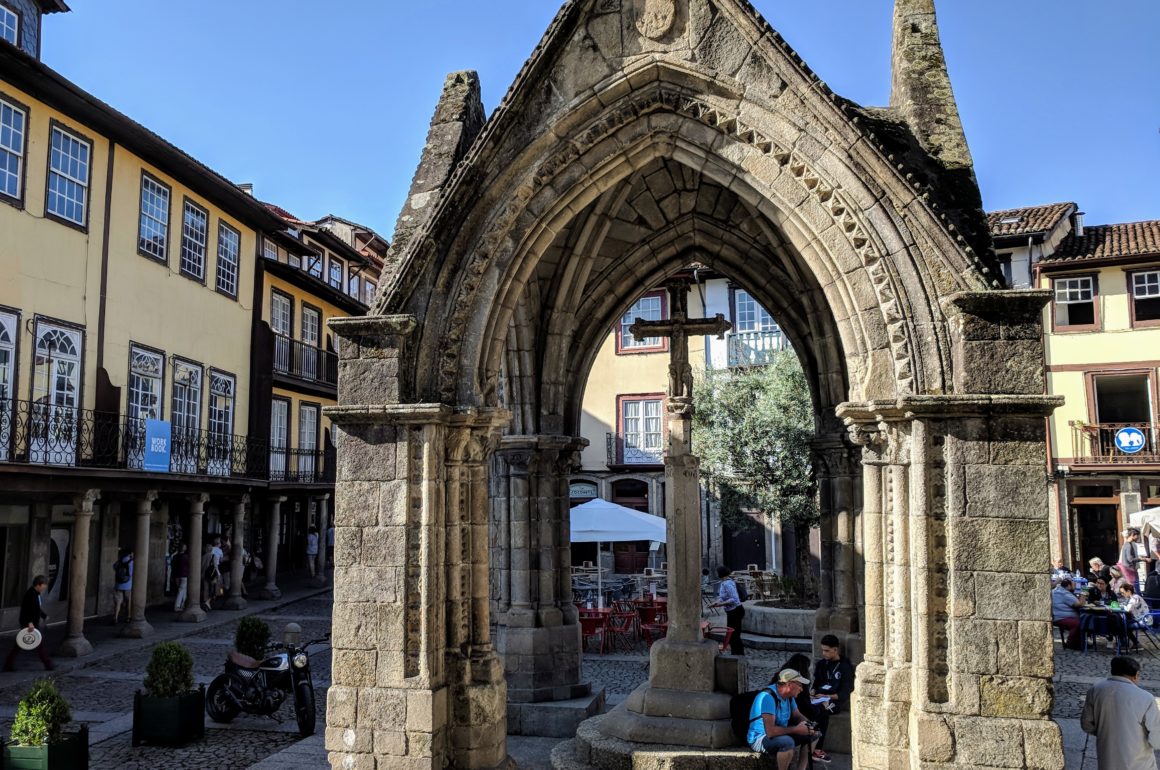
The Birthplace of Portugal
Guimaraes was founded in the 4th century and it is said to be the birthplace of Portugal. The history of Guimaraes is long and there are a plethora of stories passed down through the generations. Undeniably, this quaint little city is significant to the history of Portugal. And, it is an easy day trip from Porto.
A UNESCO World Heritage Site
Guimaraes is actually a UNESCO World Heritage Site, and we were looking forward to exploring. We found our way to the visitor’s center to pick up a map of the city. Having done our homework we had pretty much pinpointed the highlights of the city, we just needed the map to see the layout and chart our course.
Exploring Guimaraes
With our handy dandy map of the city, we explored the highlights of Guimaraes. I think it’s fair to say that one could easily spend a few days exploring this lovely historic city. We made the best of our one day and we definitely caught the highlights.
Castelo de Guimaraes
Castelo de Guimaraes was built in the 10th century by the order of Countess Mumadona. It was built as a fortification to protect the Mosteiro de Santa Maria, although today it is a shell of a once commanding fortress. Visitors can pay a minimal admission fee and walk around the edges and up/down several flights of stairs. It’s fairly easy to see the outline traces of what once was. The views from the top alone are well-worth the price of admission.
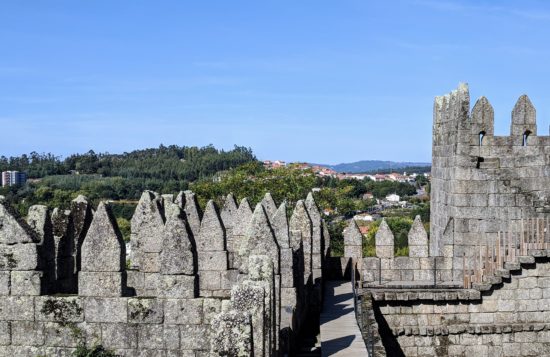
Paco Dos Duques de Braganca
We made our way to the palace, Paco Dos Duques de Braganca. It was built in the 15th century, and many of the rooms have been renovated to give visitors a feel for the original. The palace was built by D Alfonso who was the illegitimate son of D. Joao I, the 8th Count of Barcelos.
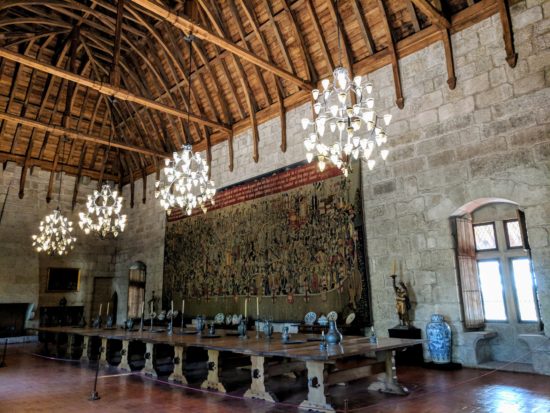
Padrao do Salado
With our stomachs growling we made our way back to the central square to do a bit of window shopping and to look for a nice spot to enjoy a casual lunch. Near the square we found the Padrao do Salado. It commemorates the battle of Salado in 1340 against the Moors. Seriously, Guimaraes must be the birthplace of Portugal. The history is phenomenal and it’s everywhere you turn.
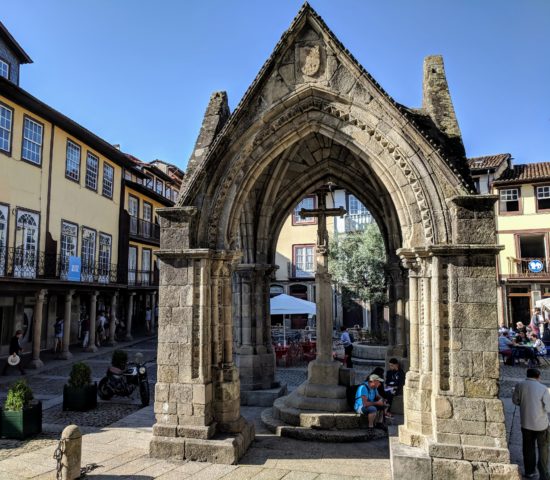
Teleferico de Guimaraes
After satisfying the hunger pangs we made our way to the Teleferico de Guimaraes and we rode the cable car to the top of Montanha. The panoramic views were wonderful. There is a lovely tree-shaded picnic area, along with hiking trails and a small modern church.
A Church & Gardens
We had just enough time to visit the Igreja de Nossa Senhora da Consolacao E Santos Passos. This church, and the fantastic geometric gardens was a wonderful surprise. The church dates back to the 16th century. It wasn’t the most ornate church we’ve visited, however, it was definitely special. What sets it apart is the adjacent gardens.
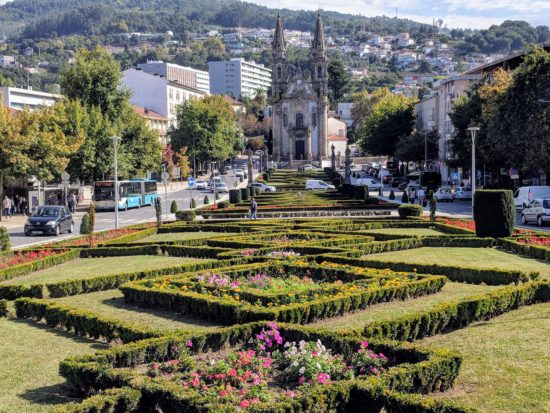
Exploring the historic charms of Guimaraes makes for the perfect day trip from Porto. One could easily spend a few relaxing days exploring all of the nooks, crannies and cobblestone alleyways. Explore the highlights of this wonderful place and time in history. The city is a living museum.
If You Go:
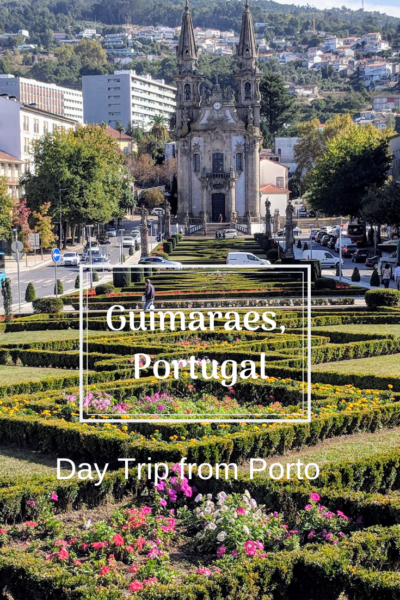






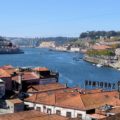






Your posts about day trips from Porto continue to inspire me to want to return to that wonderful region of Portugal. Even if we never have an opportunity to go back, at least we can do so vicariously through your posts, Patti. Thank you,
Annie
Thank you, Annie. I’m glad you’re enjoying our posts. I hope you do have the opportunity to return to Portugal, it’s such a fantastic country with so much to experience.
We very briefly passed through Guimaraes on our last visit to Porto, but we’re hoping to return later this year when we explore more of central and northern Portugal. The cable car views look amazing! We want to see some of the Douro Valley, for sure. Happy New Year!

Amy Blyth recently posted…2018 travel round-up and plans for the New Year
You’ll have a great time exploring Portugal, Amy. We love all of the cities and different regions.
Smart to go the opposite way of the student groups. Love the architecture and the gondola views.

Gaelyn recently posted…An invitation to a Lunar eclipse meetup
The gondola was really fun. I have a wicked fear of heights but did just fine and thoroughly enjoyed the ride and the views from the top.
Patti, your reference to the school children’s field trip reminded me of our mandatory 4th grade field trip to St. Augustine, FL to learn about the history of Florida. What better way to learn than at the place where it all began.
And, especially St. Augustine! We only had 1 day to explore but we sure had a good time. Would love to go back for more.
It’s easy to imagine the multitude of historic school outings we’d have had if we’d grown up in Portugal, isn’t it Patti? However, I kind of like the the picture I get in my head of you and Abi trying to dodge the hordes of students and still successfully see and enjoy the highlights. My plan this spring is to explore more of north and Central Portugal and Guimaraes sounds like a delightful stop along the way. And … oh those spectacular gardens near the church look inviting!
Oh, definitely, Anita. But like all kinds most of them were just having so much fun being out of school, most of what they’re supposed to be taking in goes right over their heads. But, on the flip side they are being exposed to their countries history and that’s all good.